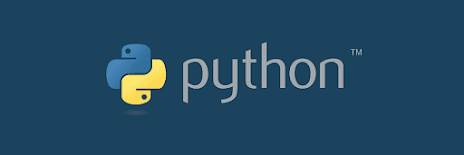WHAT IS PYTHON ?
WHAT IS PYTHON ?
Python is a general-purpose programming language in a similar vein to other programming languages that you might have heard of such as C++, JavaScript or Microsoft’s C# and Oracle’s Java. It has been around for some considerable time having been originally conceived back in the 1980s by Guido van Rossum at Centrum Wiskunde & Informatica (CWI) in the Netherlands. The language is named after one of Guido’s favourite programs “Monty Pythons Flying Circus”, a classic and somewhat anarchic British comedy sketch show originally running from 1969 to 1974 (but which has been rerun on various stations ever since) and with several film spin offs. You will even find various references to this show in the documentation available with Python. As a language it has gained in interest over recent years, particularly within the commercial world, with many people wanting to learn the language. This increased interest in Python is driven by several different factors:
1. Its flexibility and simplicity which makes it easy to learn.
2. Its use by the Data Science community where it provides a more standard programming language than some rivals such as R.
3. Its suitability as a scripting language for those working in the DevOps field where it provides a higher level of abstraction than alternative languages traditionally used.
4. Its ability to run on (almost) any operating system, but particularly the big three operating systems Windows, MacOS and Linux.
5. The availability of a wide range of libraries (modules) that can be used to extend the basic features of the language.
6. It is free !
Python Versions
Currently there are two main versions of Python called Python 2 and Python 3.
• Python 2 was launched in October 2000 and has been, and still is, very widely used.
• Python 3 was launched in December 2008 and is a major revision to the language that is not backward compatible. The issue between the two versions can be highlighted by the simple print facility:
• In Python 2 this is written as print 'Hello World'
• In Python 3 this is written as print ('Hello World')
It may not look like much of a difference but the inclusion of the '()' marks a major change and means that any code written for one version of Python will probably not run on the other version. There are tools available, such as the 2–3 utility, that will (partially) automate translation from Python 2 to Python 3 but in general you are still left with significant work to do.
This then raises the question which version to use?
Although interest in Python 3 is steadily increasing there are many organisations that are still using Python 2. Choosing which version to use is a constant concern for many companies.
However, the Python 2 end of life plan was initially announced back in 2015 and although it has been postponed to 2020 out of concern that a large body of existing code could not easily be forward-ported to Python 3, it is still living on borrowed time. Python 3 is the future of the Python language and it is this version that has introduced many of the new and improved language and library features (that have admittedly been back ported to Python 2 in many cases).

Comments
Post a Comment